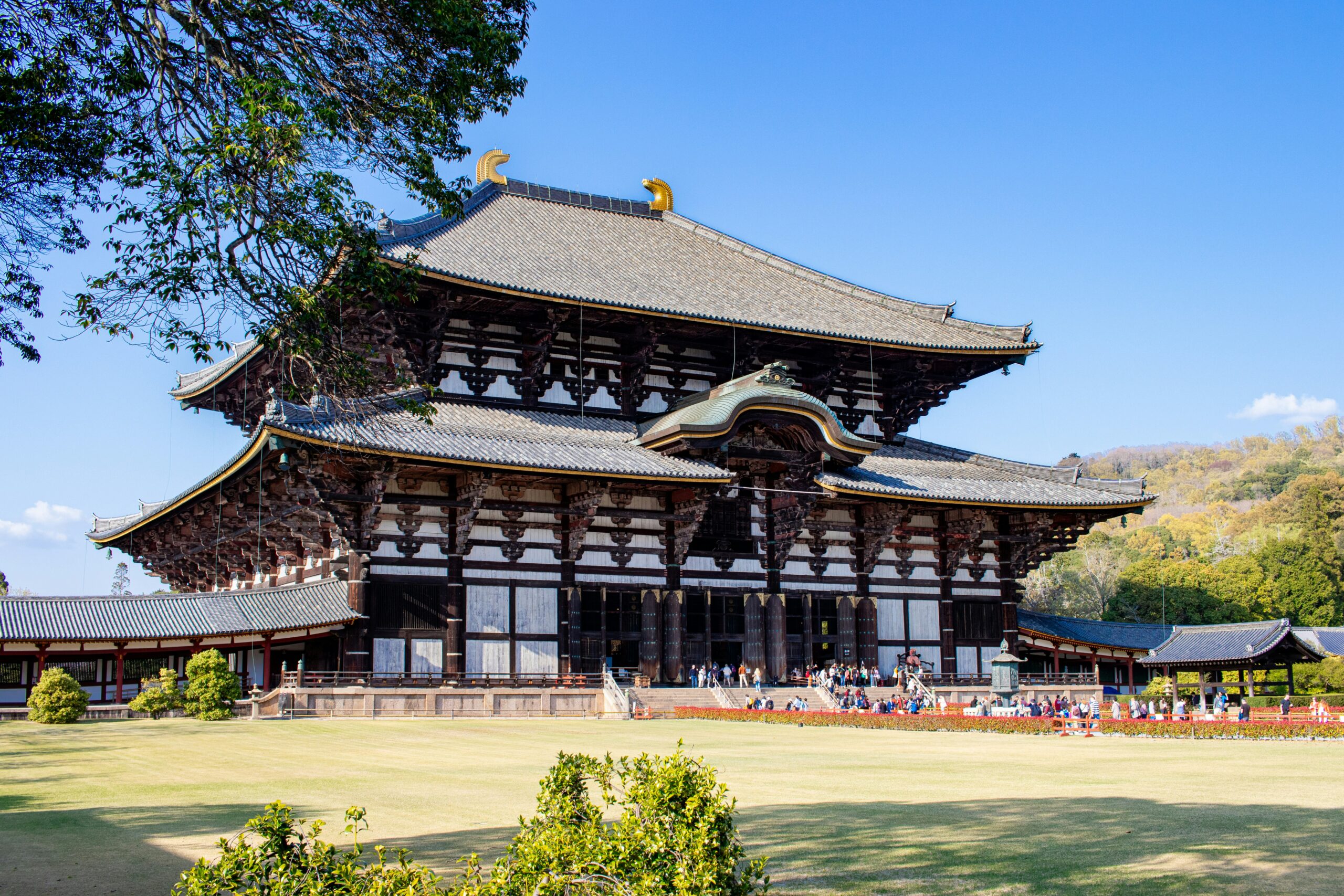On my way back from a business trip in spring, I decided to take a small detour—first to Kyoto, and then, on a sudden impulse, to Nara. To be honest, I knew very little about the place. Something about deer. Maybe an old temple or two. That was it.
But then, while sitting in the hotel lobby, I overheard an American traveler say something that caught my attention:
“Leaving Japan without seeing the Great Buddha of Tōdaiji is like leaving Rome without visiting the Sistine Chapel.”
That did it.
Forty minutes later, the train pulled into Nara Station. As I stepped out, a soft spring breeze brushed past me. The cherry blossoms lining the road blurred the air like a gentle mist. Nara, located just next to Kyoto in western Japan, felt like a place where the weight of history and the stillness of time quietly coexisted. It had the markings of a tourist town, yes, but there was something pastoral about it—something deeply calm.
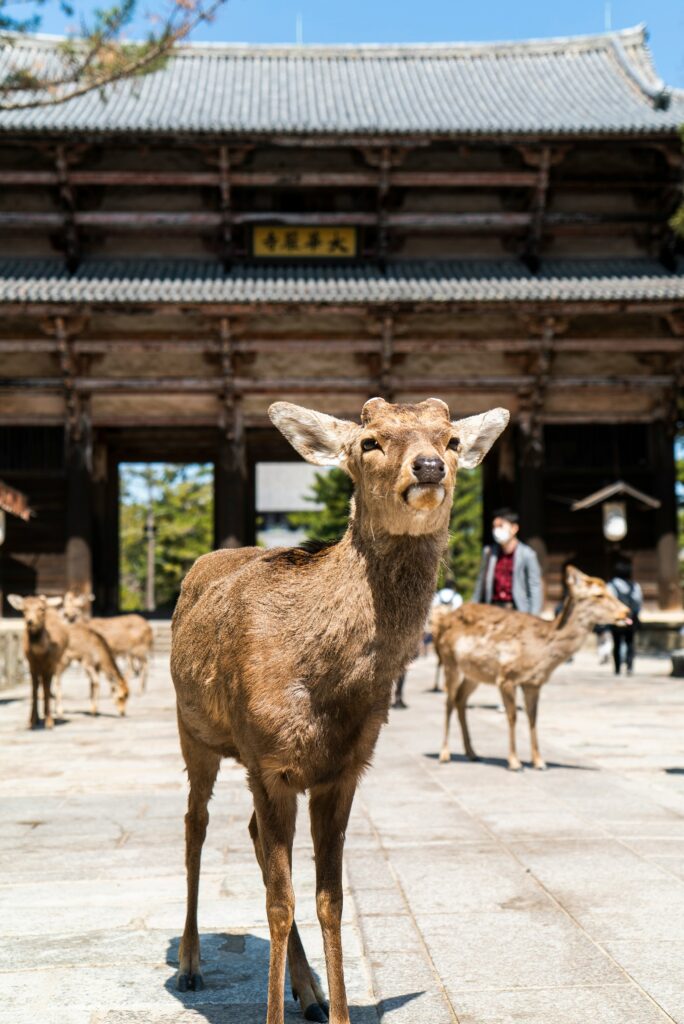
As I entered the approach to Tōdaiji Temple, I felt the air shift. Deer wandered freely among the tourists, brushing past with little care. A few stopped and looked up at me, their eyes wide and unafraid. I later learned that the deer of Nara Park are considered sacred messengers of the gods. For centuries, they’ve shared this land with people.
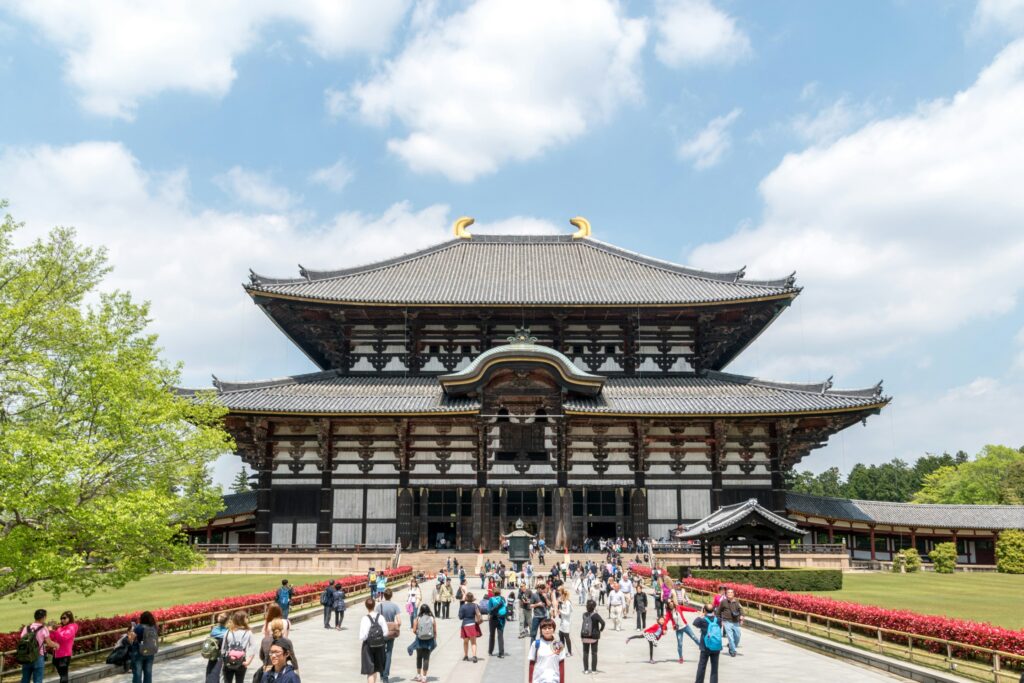
Soon I reached the temple’s Great South Gate. Towering and wooden, it left me breathless. Rebuilt in the 13th century, it stood there like a sentinel of time, quietly enduring. Passing beneath it, I finally caught sight of the Daibutsuden—the Great Buddha Hall.
Its gilded rooftop ornaments shimmered against the blue sky. The hall stood majestic beyond a wide stretch of lawn. I would later learn that it’s the largest wooden building in the world, but even without that knowledge, its sheer presence was overwhelming.
Inside, I came face to face with the Great Buddha.
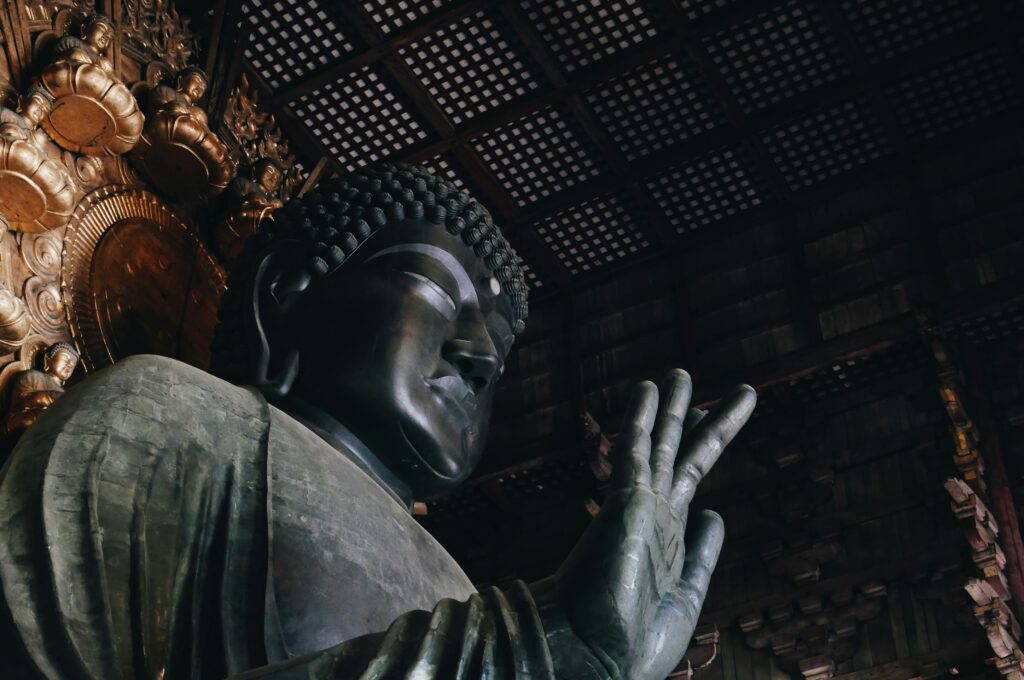
Over 15 meters tall, this massive bronze statue was commissioned in the 8th century by Emperor Shōmu as a prayer for peace and the well-being of his people. That era in Japan was marked by famine, disease, and unrest. In the midst of such chaos, a ruler had dreamed of creating something vast and serene—a Buddha to unite the hearts of his people.
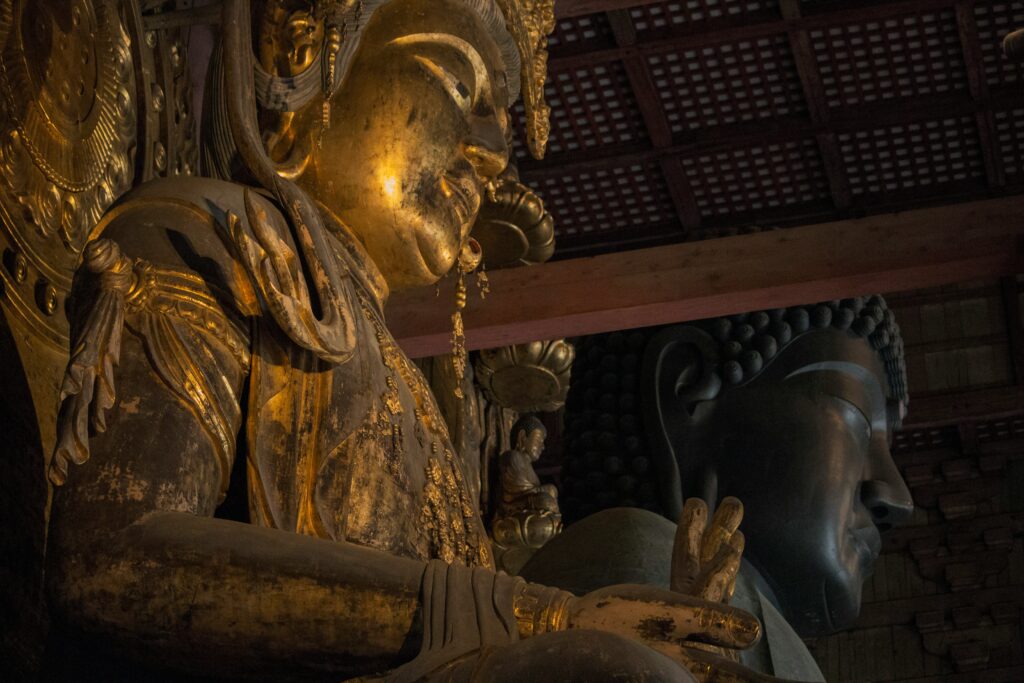
There was a depth in its gaze, something beyond words. It didn’t judge, nor comfort. It simply looked. And somehow, that was enough. A quiet warmth stirred in my chest. The spirit of the one who once wished peace upon his country still seemed to live in that space, undisturbed.
When I stepped outside again, the sunlight had softened. Along the temple path, I found a small traditional restaurant and stepped inside. A wooden sliding door gave way to a peaceful interior of tatami mats and low tables. Through the window, cherry blossoms danced in the breeze.
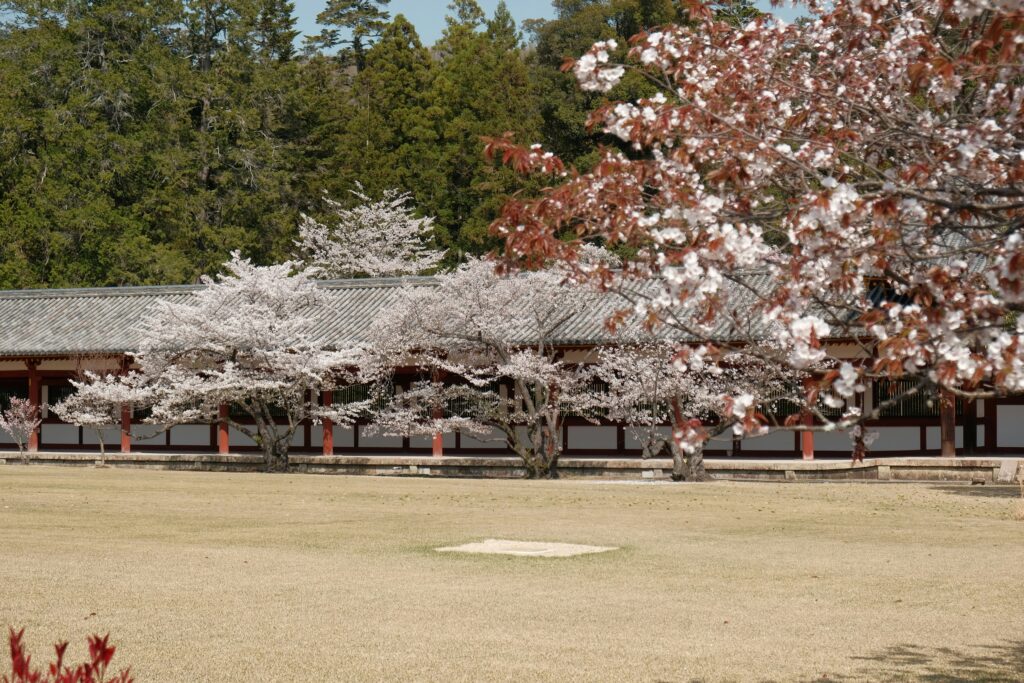
I ordered a simple set meal: grilled mackerel, steamed rice, miso soup, and local pickles. Everything was modest, but full of rich, grounded flavor. It reminded me of the city itself—quiet, unassuming, and deeply nourishing.
Craving something sweet after lunch, I wandered into a machiya café housed in a century-old wooden townhouse. Inside were soft washi paper lanterns and gentle music. I ordered a delicate crepe wrapped around sakuramochi—a soft pink crepe filled with sweet bean paste and a faintly salty cherry blossom leaf. The moment I took a bite, the taste of spring bloomed on my tongue. It was a gentle fusion of East and West, familiar yet entirely new.
At the café counter sat a woman, reading alone. She turned to me with a kind smile.
“Did you visit the Great Buddha?” she asked.
She was about my age, born and raised in Nara. Her voice was soft, her black hair tied back simply. Every movement she made was quiet, graceful. She worked at a local museum, she told me—introducing visitors to the art and history of Nara.
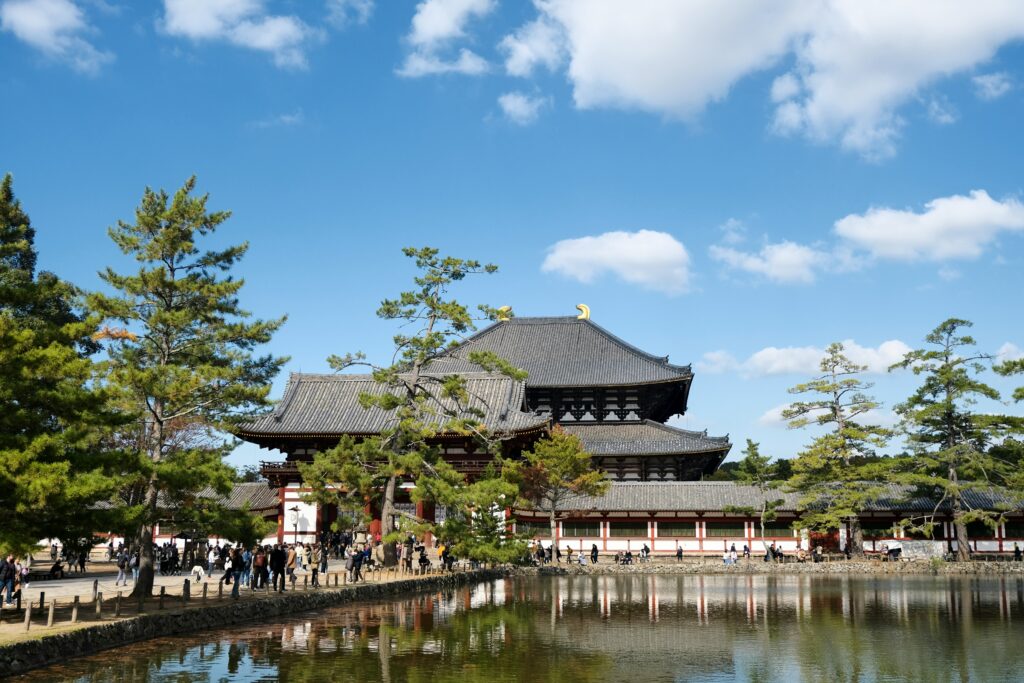
“Tōdaiji isn’t just a sightseeing spot,” she said.
“This temple has burned and been rebuilt, again and again—through wars and disasters. And still, it stands. I feel like its history is alive.”
Her words made me pause.
To see destruction not as an end, but as part of the process of continuation—that idea was new to me. The scars, the restorations, the quiet perseverance of people across time… all of it seemed to become prayer. I realized then that such a flow of time truly lived in this city.
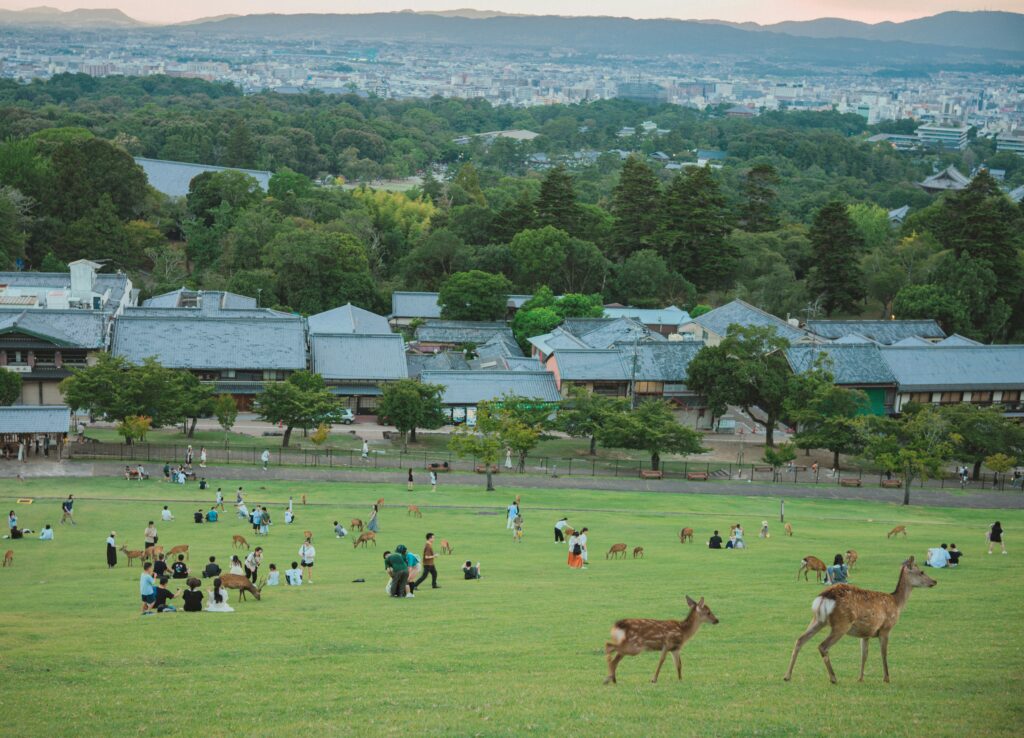
The next day, I visited Kasuga Taisha Shrine, as she had recommended. Its vermilion halls and moss-covered lanterns nestled in a serene forest. I walked on to Naramachi, a district where traditional wooden homes still line the streets, peeking into local shops and letting the gentle atmosphere ease something inside me. And finally, I took a longer trip to Mount Yoshino. The mountainside, completely blanketed in cherry blossoms, looked like something out of a dream.
On the bullet train back to Tokyo, I watched the scenery blur by and realized something within me had shifted.
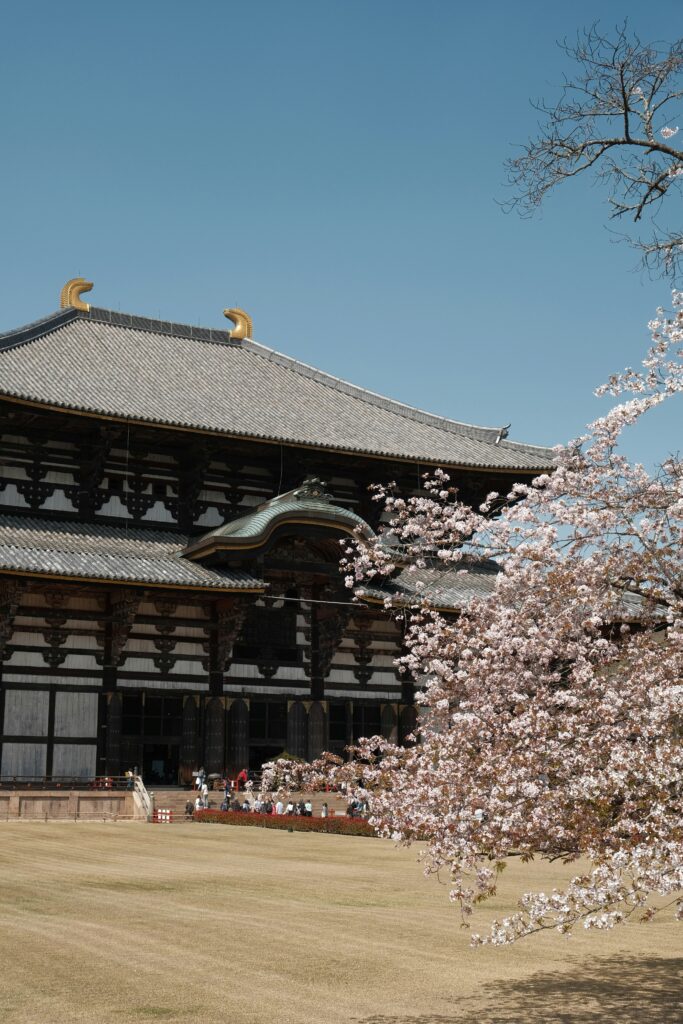
Until now, I had always chased after what could be seen—success, results, perfection. But in Nara, what moved me were the things unseen: the warmth in a stranger’s voice, the patience etched into old buildings, the quiet endurance of the natural world.
Perhaps what matters most isn’t that things never break—but that we keep returning to them, again and again. For someone like me, who had always clung to precision and correctness, the spring breeze of Nara had gently opened a window inside.
And for now, that was enough.
Spring in Nara had whispered to me—softly, but unmistakably.

